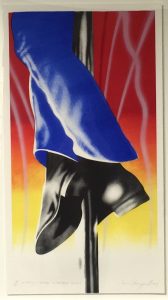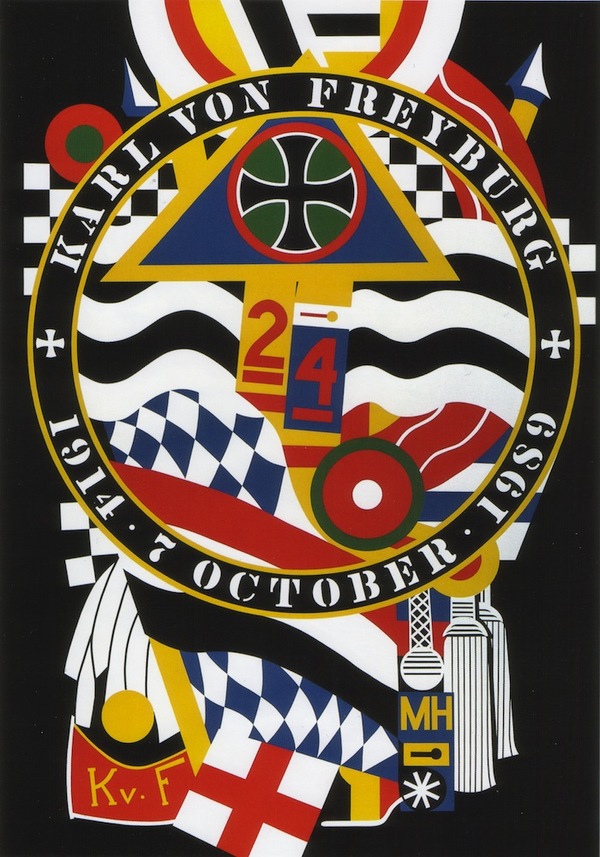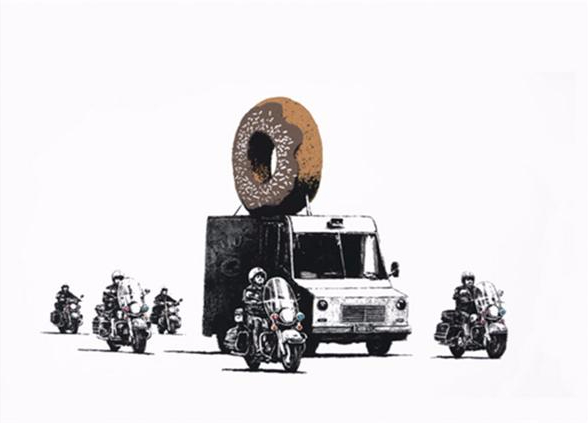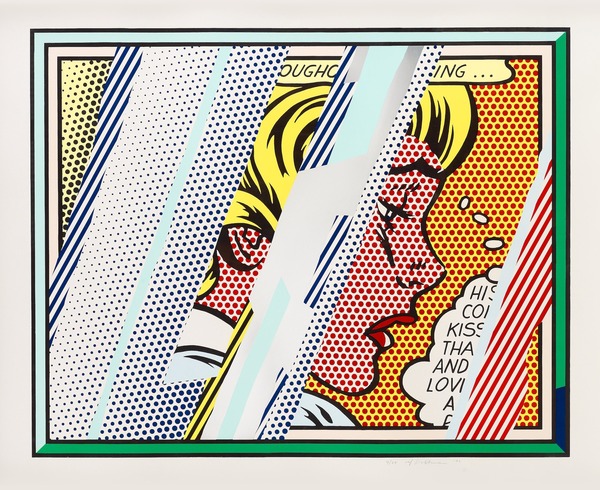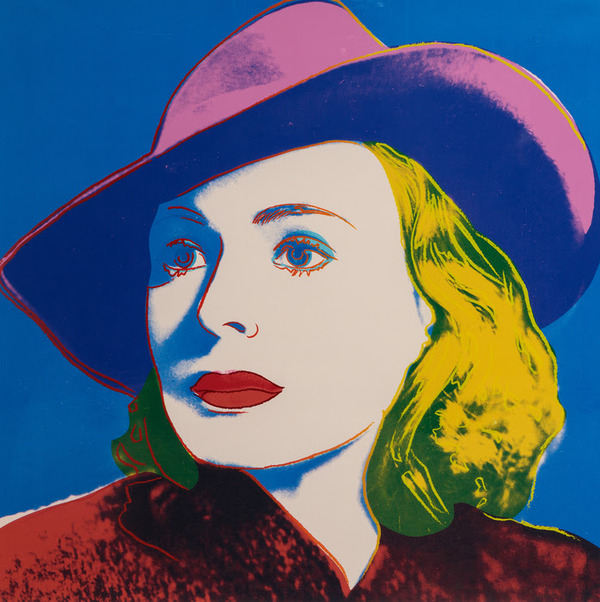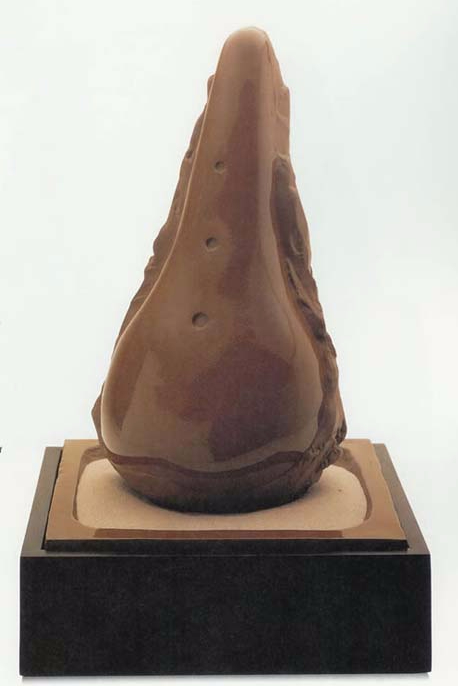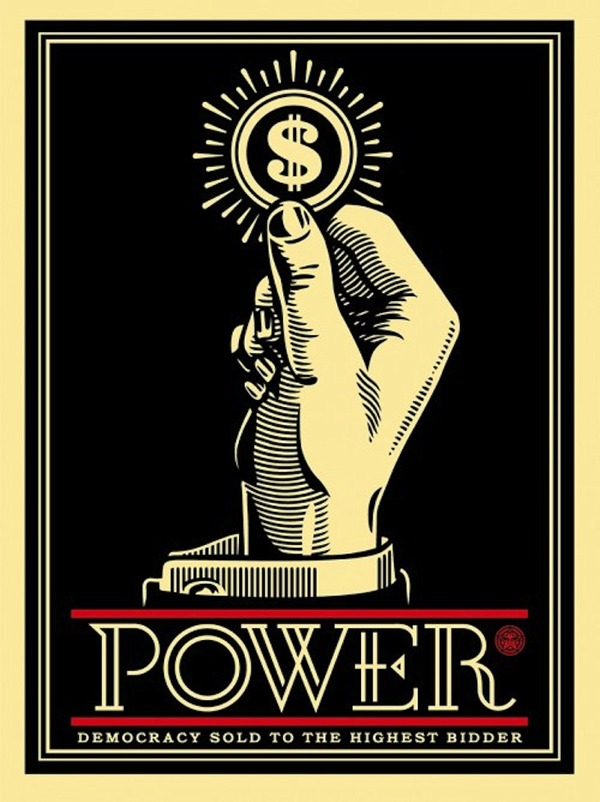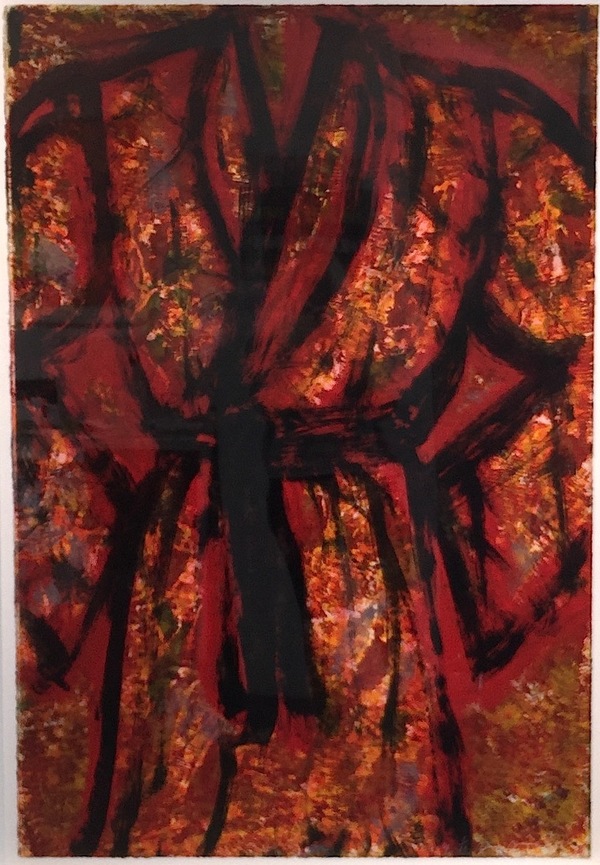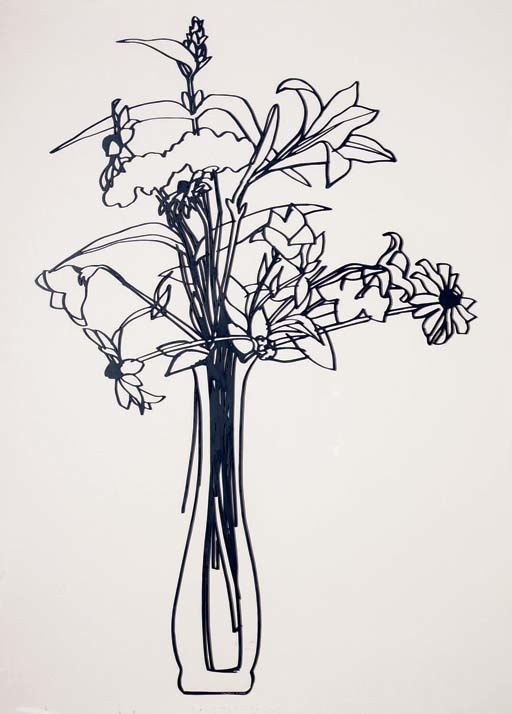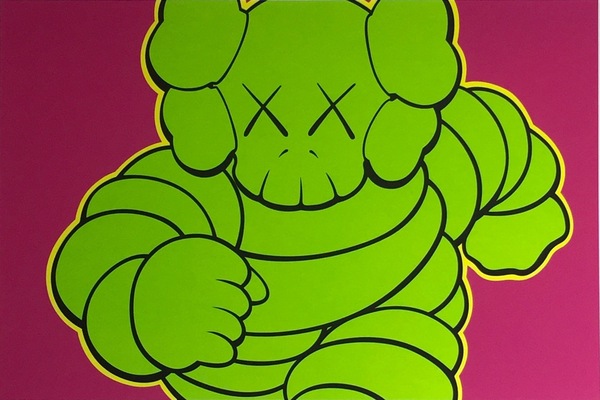|
Robert Indiana
KVF I, from Hartley Elegies
1990
Screenprint
77 x 53 in.
Edition of 50
Pencil signed and numbered
About This Work:
Born Robert Clark in New Castle, Indiana, in 1928, Robert Indiana adopted the name of his native state as a pseudonymous surname early in his career.
Robert Indiana is one of the six original pop artists. However, what distinguishes Indiana from his “Pop” colleagues is the depth of his personal engagement with his subject matter. Indiana’s works all speak to the vital forces that have shaped American culture in the late half of the 20th century: personal and national identity, political and social issues, the rise of consumer culture, and the pressures of history. Rather than using symbols from the mass media, Indiana makes images of words that focus on identity, enticing his viewers to look at the commonplace from a new perspective.
This work of the week, KVF I, is the first one of a series of 10 prints called Hartley’s Elegies. The series was inspired by Mardsen Hartley’s painting Portrait Of A German Soldier, that is exhibited in the permanent collection of the Metropolitan Museum Of Art, in New York City. Hartley was an American painter who executed this painting as a tribute to the young German soldier Karl Von Freyburg, who died during World War I and with whom Hartley had a deep friendship/relationship.
This is Indiana’s personal reinterpretation of Hartley’s painting. Indiana’s Elegies not only retell Hartley’s story but also provide us with a glimpse of his own story, with allusions to himself, his peers, places and historical events with overlapping symbolic meanings, forming a web linking his life to Hartley’s life. There is even a guide to decode Indiana’s Elegies.
For example, “7 October 1989” is the date in which Indiana began the Elegies series, 75 years after Von Freyburg’s death; it is also the year of the fall of the Berlin Wall.
Numbers like 24, 66, 8 or 4 are recurring in the prints of the series, and they all carry references to mysticism and spiritualism, besides personal meanings to dates and little facts in the lives of both artists. A little example: the 66 is Hartley’s age at his death but it also represents Indiana’s father, who worked for Phillips 66. All these references are complex and copious, and the list goes on.
Another very interesting fact is that in the other prints of the series one can see the recurring word “Ellsworth”. Ellsworth is the town in Maine where Hartley died, but it is also a reference to Ellsworth Kelly, the famous artist and influential former partner of Indiana in New York.
The whole story between Marsden Hartley and Karl Von Freyburg is an evident parallelism that refers to the relationship between Robert Indiana and Ellsworth Kelly.
KVF I is the most similar to the original painting of the series, keeping the original image, colors and theme. It is not a reinterpretation of Hartley’s painting, as the other prints of the series are.
Indiana likes to create endless variations of his works and early themes, experimenting with different color schemes and compositional formats to achieve a wide range of visual and emotional effects. The colors vibrate to attract each other into a reconciliation of opposite forces.
Robert Indiana’s Hartley’s Elegies series is very complex, introspective, intellectual and cerebral. The beauty of Indiana’s work is indeed the beauty of taking one’s time to quietly look at something that is not new, but just part of someone’s daily life. It is the beauty of balance and harmony, contemplation and knowledge, the beauty of pure reflections translated in conceptual images.
Indiana captures the complexity of Life in the enigmatic intricacies of his compositions. He is a Pop artist but, from this particular point of view, he can also be considered fully conceptual for his hermetic style, which represents an evident break from the “lack of message and superficiality” of the Pop Art movement.
Indiana he helps us to decode life by emphasizing the most important things in it.
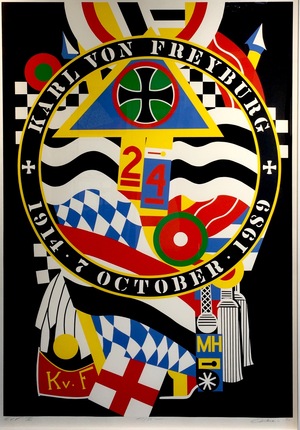 KVF I by Robert Indiana 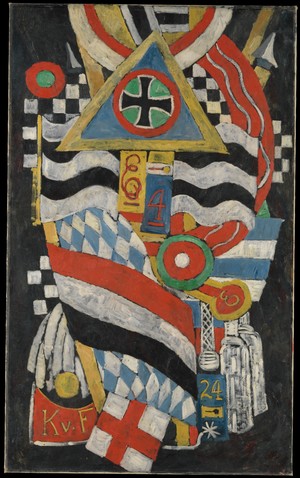 Portrait Of A German Soldier, by Marsden Hartley
|
